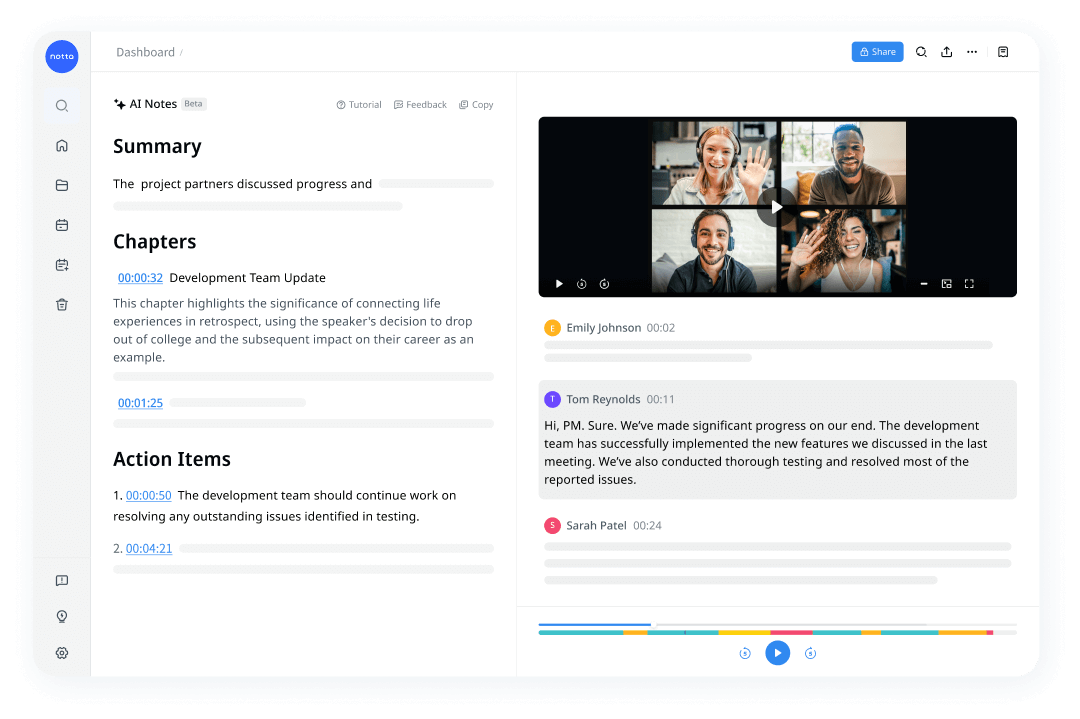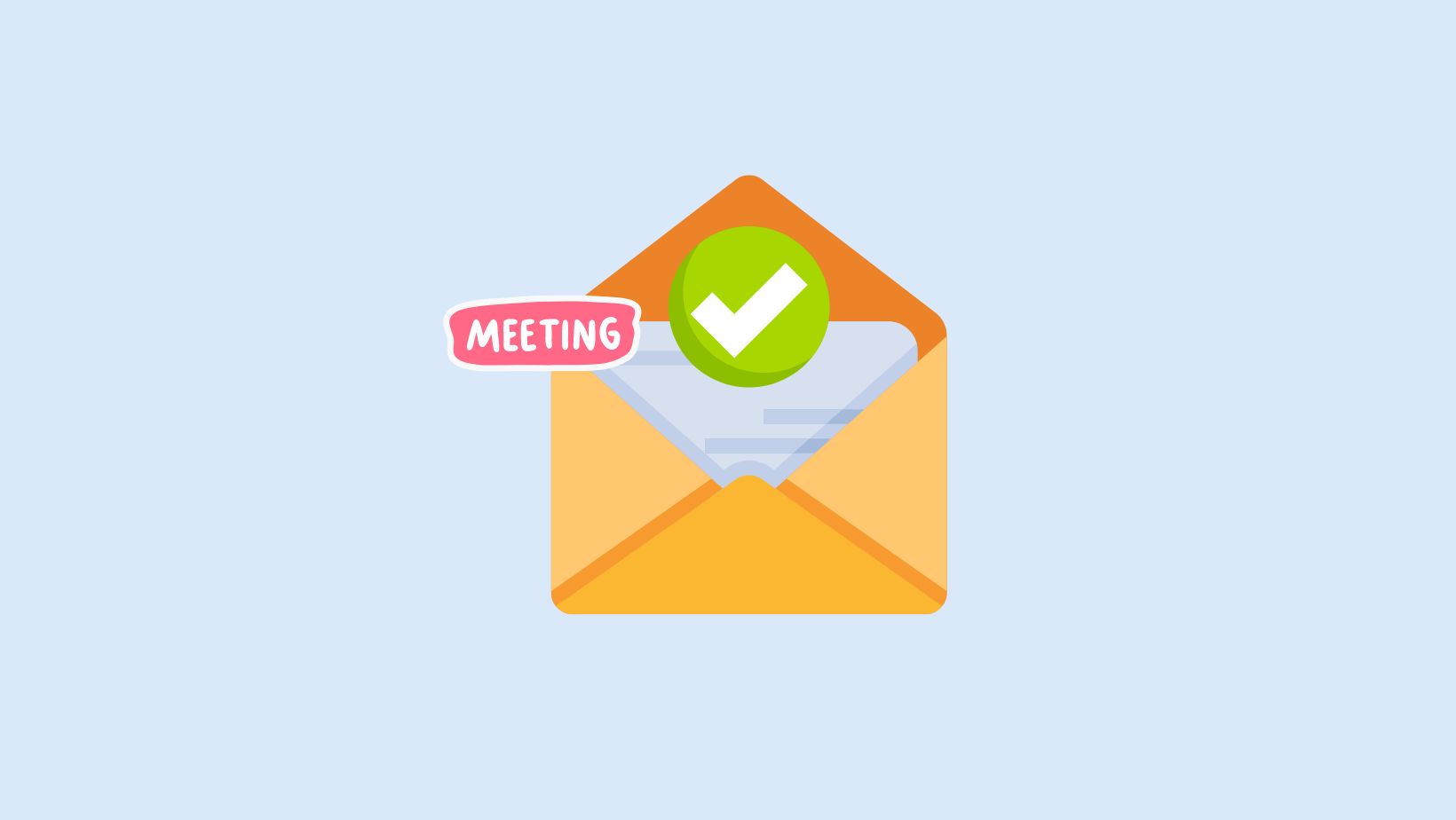There's nothing more stressful than preparing for a meeting and ending up staring at the blank screen with no attendees. This might happen when some attendees forget about the meeting, or they miss some details that are important for preparation.
If you (or your attendees) often miss scheduled meetings, the best way to avoid headaches and time wastage is by sending a meeting confirmation email. It's a quick and informal reminder that will help the attendees know about the meeting agenda, participants, and other important information.
I've tried sending confirmation emails a few days before the scheduled event, and this has helped me reduce the number of no-shows. In this guide, I'll help you with how to write an email to confirm a scheduled meeting.
What is a meeting confirmation email?
A meeting confirmation email is an informal email that's used in the business and corporate world. It's usually written and sent for team gatherings, one-on-one chats, or client presentations. Your meeting confirmation email should typically include the date, time, location, number of participants, and purpose of the scheduled event.
Is a meeting confirmation email the same as an appointment confirmation email?
No. While meeting and appointment confirmation emails are sometimes used interchangeably, they differ. The key goal of both emails is to confirm the scheduled event, such as a business appointment, one-on-one meeting, or a professional event.
While they serve the same purpose, appointment confirmation emails are used in the service business industry. They typically involve scheduling consultations, treatments, or specific services, such as legal, spa, beauty, hair, coaching, healthcare, and other similar services.
Why should you send a meeting confirmation email?
There are many reasons why you should send a meeting confirmation email to the attendees. Let's explain them briefly:
Avoid miscommunication: Meeting confirmation emails typically include the time, date, location, and other details to improve clarity and prevent miscommunication. When you craft a detailed email, it leaves no room for any misunderstanding.
Reduce cancellations: Meeting cancellations and no-shows mean attendees lose their important time. Confirmation emails act as a reminder to help attendees plan accordingly, prioritize the scheduled event, and reduce cancellations.
Set clear expectations: The meeting confirmation emails include the team meeting agenda or purpose, which sets clear expectations for the attendees.
Never miss a meeting again
Create shareable events that connect with your calendar automatically using Notta's meeting scheduler.
How to write a meeting confirmation email?
In the past decade, I've sent over 100+ meeting confirmation emails — and that's the reason behind successful meetings. Here's how to confirm a meeting with an email format that actually works:
1. Write a clear subject line
The meeting confirmation email should have a clear subject line that is short, to the point, and informative. This will help the recipients understand why you are sending the email. For example, you can check this simple subject line:
‘Confirmation email for a meeting scheduled on May 30 at 11:00 AM.’
2. Personalize the email
If you're scheduling a team meeting, it's best to personalize the email and start by addressing the name of the recipient. It's like a virtual handshake that'll make your email feel less generic and improve thoughtful communication. For example, you can go with something as simple as
‘Hey, Sarah! I hope the week is treating you well.’
3. State the purpose of the meeting
Everyone is busy — and they might not have time to read through lengthy emails. Right after the greeting, you should write the purpose of the meeting. If you're writing an email to confirm a team meeting, you could state: ‘
I'm writing this email to confirm the meeting scheduled for May 30, 2024, at 11:00 AM.’
4. Include all necessary details
The job of a meeting confirmation email is to inform the attendees about the necessary details, including the location and purpose of the meeting. You should also include the meeting agenda in the email so all the attendees can prepare themselves for a collaborative session. If you're planning to schedule a virtual team meeting, make sure you add the link to the meeting in the description.
5. Ask for a response (optional)
This one's simple: You just need to include a line at the end of the meeting email asking them to respond with Yes, No, and Maybe. It's a great way to make sure all the attendees have received and (most importantly) read the email.
Meeting confirmation email example
If you don't want to write an email to confirm meetings from scratch, here's a meeting confirmation email example you can check out:
Subject: Confirmation email for the meeting scheduled for [Insert time and date].
Hello, [Name of the attendees]. I hope you're doing well and having a great week.
I'm writing this email to confirm our upcoming meeting scheduled on [insert date] at [insert time]. The meeting will be held at [insert the joining link].
Here's the meeting agenda you can check out: [insert the link to the document].
If you have any questions about the meeting or need any assistance from my end, feel free to reply to this email.
Best Regards,
[Your Name]
Tips for writing confirmation emails
Now that I've outlined the steps to write a meeting confirmation email, here are a few best practices you should keep in mind:
Make it personal: Your meeting confirmation email shouldn't be extremely professional and formal. Instead, it should encourage people to attend the meeting.
Add some personality: Don't make the confirmation emails feel boring. You should focus on writing quirky emails and even add punch lines to make emails memorable.
Be clear: Try not to beat around the bush, especially in meeting confirmation emails. You need to be as clear as possible and include the information that's necessary and useful.
Note down the next steps: At the end of the meeting confirmation emails, you should consider including the next steps, such as replying to the email or preparing the necessary documents.
Key takeaways
There's no doubt that we all follow busy schedules, which is one of the common reasons why we forget about upcoming meetings. A meeting confirmation email is a polite way to remind everyone about the scheduled meeting and make sure that all the participants are well prepared.
If you're busy with some other work on the meeting day, you can use the Notta bot feature. It can automatically join meetings on your behalf to record, transcribe, and summarize what was said. You can then view the meeting transcripts anytime on the Notta platform and even share the summary with anyone.

FAQs
What is the format of a meeting confirmation email?
The format of a meeting confirmation email should typically include the subject line, greeting, necessary details for confirmation, the purpose of the meeting, and a call to action so the attendees can contact you for further assistance.
What to include in a meeting confirmation email?
In simple words, a meeting confirmation email should include all the necessary details that will help the attendees prepare better for the collaboration. Some detailed confirmation emails also include the meeting agenda and a document covering how attendees can prepare for the session.
How to ask for meeting confirmation?
If you want to ask for a meeting confirmation, you'll need to be polite, clear, and flexible. Here's an example: ‘Hello, John! I’ve sent you an email on [date] about our scheduled meeting. Kindly confirm that you've received the email and will participate in the session.’
How to reply to an email for meeting confirmation?
If you've received a meeting confirmation email and want to craft a reply, you can simply say: ‘I can confirm that I can attend the meeting scheduled for [time and date].’

